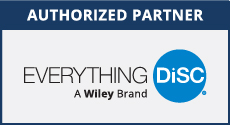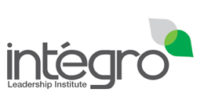People-Whispering Tip: The Positive Power of Assessments in the Workplace
DiSC Assessment Application: The Five Behaviors of a Cohesive Team , Complimentary Strategy Sessions, Everything DiSC Virtual Certification and The Work of Leaders Book
Transformational Coaching Tip: Tips for Being Inspirational
People-Whispering Tip:
“Know Thyself” Socrates (469-399 BC)
It Starts With Self-Awareness:
There is an ancient saying inscribed on the Temple of Apollo at Delphi attributed to the great Greek philosopher Socrates. That saying is “Know Thyself.” Socrates knew that we must first understand ourselves in order to be truly wise.
In today’s language, we call this self-knowledge self-awareness. Self-awareness is a solid place to start since for most coaches, our purpose is to assist our clients in moving from “where they are” to “where they want to be.” “Where they are” means having an accurate self-assessment of their strengths, preferences, motivations, and passions as well as their areas for growth and development. Since we all have our blind spots, assessment tools can increase our clients’ self-awareness.
The Positive Power of Assessments in the Workplace:
To assess or not to assess as a coach is a great question to ask. Since my area of expertise is Executive Leadership Coaching and Employee Engagement, that lens informs my perspective.
The purpose of this article is to highlight the major things to consider when deciding whether to use assessment tools in the workplace. When properly used, it is my position that any number of assessment tools can be a powerful catalyst to help give people the opportunity to bring their whole selves to work.
In my experience, assessments can help people gain greater insight into what they need to be more successful, productive, and fulfilled at work. What a gift it is to provide a means for people to more fully embrace and understand their gifts, talents, and strengths as well as their “opportunities.”
Imagine the benefits of truly connecting who you are with what you do. Through these tools, we can help our clients understand the things that make work easy and joyful. We can also help confirm for them the things they might be better off delegating, outsourcing, or even avoiding altogether if possible.
It doesn’t stop with just an understanding of the self either. Many assessments can be used to better understand and connect with others. Interpersonal relationships can be improved through communication, team dynamics can be improved through trust and teamwork, and employee engagement and productivity can dramatically improve an organizational culture which ultimately results in greater productivity and better financial results.
Why Assessments Can Supplement Good Coaching:
1. People Thrive Within An Organizing Framework
Remember The Seven Habits of Highly Effective People? This book, written by Dr. Stephen Covey, has remained on the best-seller lists for decades. In the 25th anniversary edition, Jim Collins of Good to Great fame wrote in the introduction, “Covey created a standard operating system – the “Windows” for personal effectiveness and he made it easy to use.” In other words, he created a framework with the 7 Habits. Likewise, a good assessment with an elegant, easy to understand model can provide an organizing framework to guide more effective behavior.
As a leadership coach, my primary objective in working with clients is to assist individuals, teams, and organizations to create a healthy, engaged culture where people want to come to work and give their best. This process begins by helping their leaders to become more self-aware.
Obviously, my tool of choice is the original DiSC model, a personality/behavioral style assessment that helps individuals to determine their naturally effective and ineffective traits in relationship to the needs of a particular situation.
Understanding the profile in depth helps me guide coaching clients to better manage their tendencies by building and capitalizing on their natural strengths, mitigating their limitations, and managing their areas for growth.
I recall taking my first DiSC assessment in my thirties and wondering why I hadn’t learned about this earlier! I walked away with greater clarity and insight into why I was motivated by some tasks and clearly stressed by others.
Understanding the DiSC profile also gave me a sense of how to identify the behavioral tendencies and needs of others so that I could learn to speak to them in their language. Rather than assuming that others would like to be approached and motivated in the same way I would, I learned how to adapt by crossing the bridge into the other person’s world. Even the mere willingness to do so, often results in greater trust, rapport, and ultimately better teamwork and effectiveness.
2. People Don’t Tend to Argue with Their Own Data
Assessment tools can serve to provide feedback in a more objective, replicable manner. Information generated from a valid and reliable tool feels less personal and is often more easily digestible than verbal feedback that can be colored by subjective feelings.
The information the client receives back feels more real since they provided the input that generated the output. Some of the inevitable biases and prejudices of working with others who see the world differently are removed in the interpretation helping everyone to work together more effectively.
Even in the case of a multi-rater or 360 degree feedback process where the client asks for input from others, the feedback report can provide a coaching client with a more objective, concrete map of where they are and where they want to go.
3. Scientific/Statistically Valid Instruments Provide Validation and Confirmation of Where to Begin
Last, once a coaching client receives their results and they are properly interpreted for them by a qualified coach, the results can bring a sense of relief. It is always helpful to understand why things are the way they are. We humans like reasonable explanations for our own behavior and for the behavior of others. The feedback reports from most assessments can serve as a roadmap for where the greatest leverage points are in the coaching process.
DiSC® Assessment Application(s):
1) The Five Behaviors of a Cohesive Team is now available!
Best-selling author Patrick Lencioni has joined forces with Wiley (formerly Inscape Publishing) to offer this excellent process for building effective teams.
Teamwork is the lifeblood of an effective organization. Unlocking the code to getting groups of people to work together in high-performing and joyous ways is the key to a profitable and sustainable corporate culture.
The process consists of an individual and team assessment based upon Lencioni’s time-tested, proven model. The accompanying Facilitator Kit walks you through his research-based model to uncover where your team’s strengths and areas for growth and development lie.
To take advantage of this well-designed, time-tested method to unleash your team’s potential, call our office at 404-327-6330 or email Laura@lauraadavis.com.
2) Complimentary DiSC Strategy Sessions
Interested in a Test Run?
Schedule a complimentary DiSC strategy session with me with no obligation. During this 30 minute discussion, we’ll discuss your business objectives and challenges, talk about your organization’s leadership capabilities and see if Everything DiSC Solutions are a fit for your organization. Email me at Laura@lauraadavis.com to schedule a time.
3) Everything DiSC Virtual Certification Coming Soon!
Do you:
- Wish you had the secret decoder ring to get along with your boss, your coworkers, and even your significant other, family members, and friends?
- Want to deepen your knowledge and understanding of human nature?
- Feel conversant in the DiSC Model so that you can connect easily, solve problems together, and work through conflicts with anyone even those “difficult” people at work?
- Know how to approach people and relate to them according to their needs?
- Convince, influence, or lead others in the best possible way?
- Work cooperatively as a team member?
An understanding of DiSC can help you in all of these areas.
A new Virtual Certification program will be released this April. Some of the features of this process include:
- Multi-level Learning Platform
- Self-Paced Study Modules
- Discussion Board Capability
- End of Course Assessment and Certification
Stay tuned for further details!
4) The Work Leaders: How Vision, Alignment and Execution Will Change the Way You Lead by Julie Straw, Mark Scullard, Susie Kukkonen, and Barry Davis
Recall this book from my friends and colleagues at Inscape/Wiley introduces the Vision-Alignment-Execution model which synthesizes the 3 fundamental responsibilities all leaders have. Leaders must craft a vision, build alignment, and champion execution. Of course, there is a lot of skill required in each of these areas which is what the book is all about. First a few definitions are in order:
- Crafting a Vision: imagining an improved future state that the group will make a reality through its work.
- Building Alignment: getting to the point where everyone in the group understands and is committed to the direction of the organization.
- Championing Execution: ensuring that the conditions are present for the imagined future to be turned into a reality.
Stay tuned for future webinars and trainings which will delve into the VAE model so you will know how you can begin to apply it to your leadership challenges.
For more on how to increase your organization’s effectiveness using the Work of Leaders profile and/or training materials, please call us at 404-327-6330 or email me at Laura@lauraadavis.com.
.jpg)
The Work of Leaders book recently released by Wiley
Transformational Coaching Tip:
How to Encourage Inspiration:
Since I am highlighting the Work of Leaders book in this ezine, I thought it might be helpful to take each driver for each aspect of the VAE model in turn and offer some tips for how to implement it in the real world. Stay tuned for future editions of this ezine to learn about the other drivers to master in your leadership journey.
The three drivers of Alignment are Clarity, Dialogue, and Inspiration. In our last issue, we highlighted the second driver of alignment which is dialogue.
Here are some tips from the Work of Leaders book p. 97 on the third driver of alignment, inspiration.
Tips for Inspiration:
- Identify and label what your passion feels like.
- Choose specific talking points that speak to people’s hearts.
- Be aware that your body language and moods are often mirrored by your followers.
- Give people a common aspiration.
- Come up with a rallying cry.
- Consider your audience; offer a source of encouragement that they will care about.
For assistance in applying any of these best practices into your workplace for more powerful, effective results, feel free to call us at 404-327-6330 or email me at Laura@lauraadavis.com.
Laura A. Davis www.lauraadavis.com










